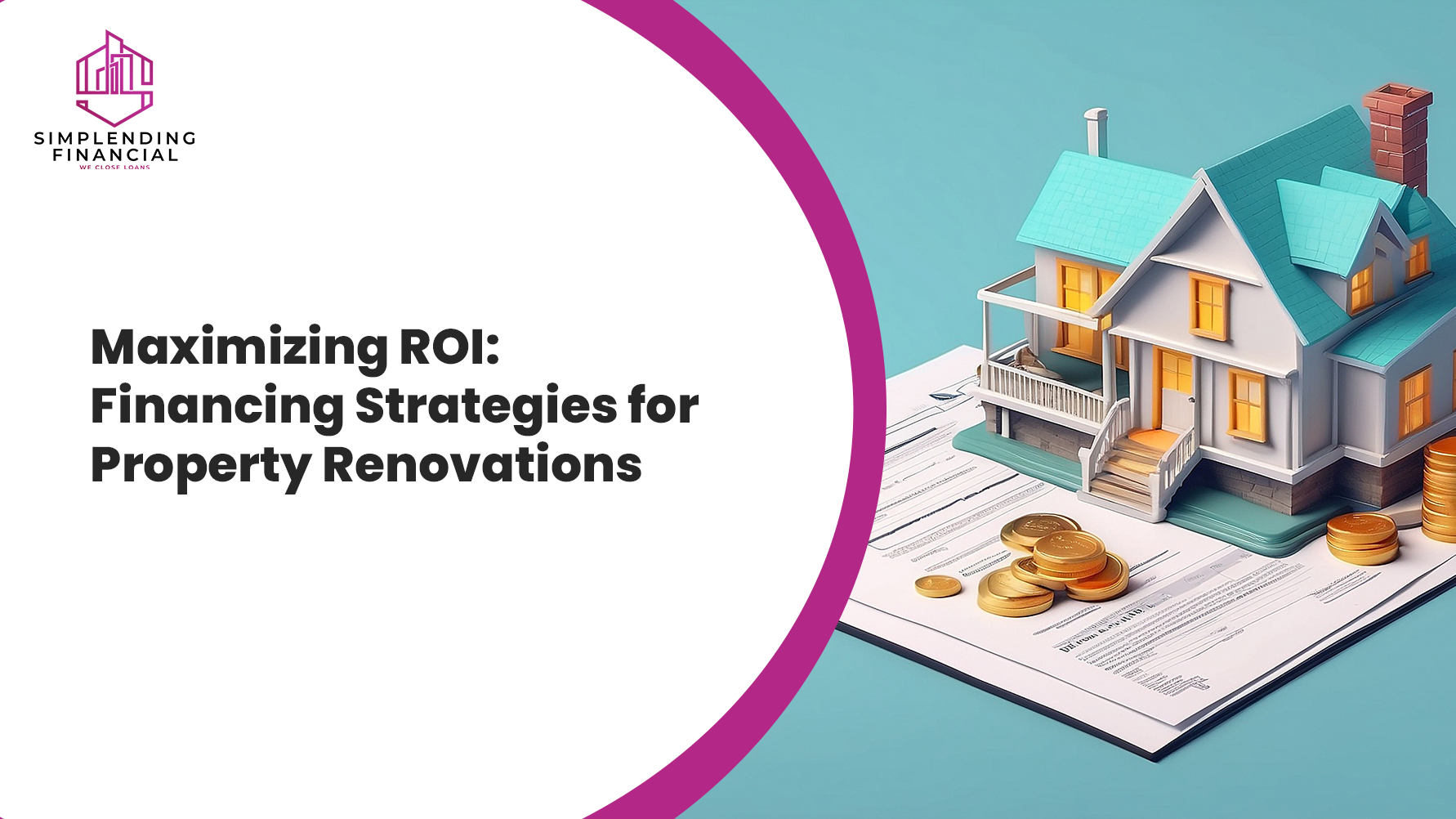Maximizing ROI: Financing Strategies for Property Renovations
08 Jul 2024
Posted By Admin
Property renovation can be a profitable deal for you, whether you are planning to flip houses for profit, get some good rental value from high-paying tenants, or enhance the resale value of your home. However, you must plan your financing strategies for renovation to increase your return on investment and reduce financial risk. Today, in this blog, we will let you know about various financing options for property renovations through which you can achieve your financial goals. But first, let’s know why you must plan financial strategies for property renovation.
Why plan financial strategies for property renovation
Maximize return on investment
With effective financial strategies, you must ensure that your property renovation gives you the highest return on investment. With careful planning, you can optimize your budget, reduce unnecessary expenses, and emphasize improvements that can add value to your property. Such an approach will not only increase your property’s marketability but will boost its resale value.
Managing liquidity and cash flow
Renovations require a high cost of labor, materials, and other unforeseen expenses. By planning your property renovation loan, it will become easy for you to manage cash flow. With proper planning, you can manage liquidity for emergencies, operational costs, and future investments.
Capitalizing on market opportunities
The real estate market keeps on fluctuating, thus giving an opportunity for property acquisition and renovation. You can check the market's favorable condition and can buy a distressed property at a discounted price or renovate the property when your neighborhood property is getting appreciated. Time is crucial in the real estate market, and you need to keep an eye on every opportunity when it comes.
Minimize project risk
Property renovation brings risks which include delays, market downturns, and unforeseen expenses. With proper financing strategies, you can keep financial buffers to address these challenges. Keeping some additional funds will ensure that you can address the unforeseen challenges promptly without compromising on the project timeline.
Financing Strategies for Property Renovations
Cash reserve and savings
This is the most straightforward option for financial property renovations. Making payments in cash will save your interest charges and loan fees associated with other financing options. This method is suitable if you have enough liquidity and want to avoid debt obligations. The main disadvantage of this strategy is you will be left with very limited liquidity for other investments or other emergency conditions.
Personal Loans
You can use personal loans for property renovations. These loans are given based on your income and creditworthiness instead of the collateral like your property. Although these loans are faster, there may be some limits based on your credit score and income. Also, with personal loans, you won’t get any tax benefits associated with interest payments.
FHA 203 (k) rehabilitation loan
This strategy is worth it for homeowners who are planning to finance the purchase and its renovation in one mortgage loan. This option is good when there is a lot of renovation or improvement work. This type of loan comes with stringent eligibility requirements and guidelines. Also, these loans are limited to primary residences and certain types of properties.
Partnership or joint ventures
You can partner with investors or enter into a joint venture, especially if you have a large commercial property to renovate. Through partnership, you can avail resources, funding and expertise from multiple parties. Also in ventures, your risk and rewards will be shared.
Private lenders
Private lending is the best option for you, especially when you are not getting loans from traditional banks or other financial institutions because of their strict lending criteria or lengthy approval process. Private lenders include specialized lending companies, private equity firms or other alternative firms that meet the specific requirements of the real estate market.
Crowdfunding and peer-to-peer lending
Through crowdfunding and peer-to-peer lending, you can get the loan you need for property renovation. Through these platforms you can raise funds from lenders or individual investors interested in real estate projects. Through crowdfunding you can get capital from a diverse pool of investors and can enjoy flexible terms with low interest rates. The only disadvantage of this type of funding is it is only eligible for specific types of renovations.
Conclusion
Choosing the right type of option for your property renovation depends on your financial condition, risk taking capability and investment goals. Each option has its own set of pros and cons; hence you must go through all the options carefully and take advice from your financial advisor to know which option will be suitable for you. Whether you go with cash reserves, personal loans, FHA 203 (k) loans, crowdfunding loans, or private loans, the key aspect is to plan your financial strategy for renovation, by keeping in mind your long-term investment objectives. By making a wise decision, you can increase your property value, grab potential buyers or tenants and get good return over investment after property renovation.


